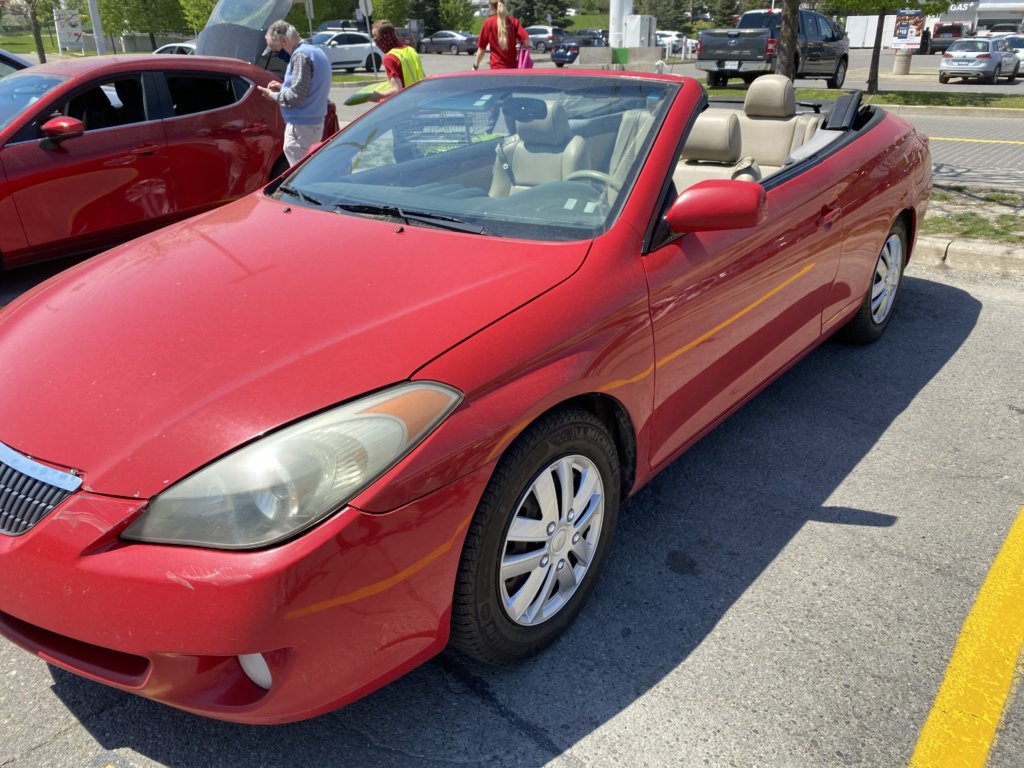Measuring Peak Noise Exposure…While Outrunning the Cops

So…. I was trying to innocently measure my noise dose during a 2-hour trip from Buffalo, New York to Toronto, Canada with my roof down in my 2006 Toyota (bright red) convertible—it was a sunny Sunday afternoon. All was going fine until this car came up behind me with flashing lights and a very loud siren.
To say the least, I was pissed off that this stupid idiot was ruining my noise measurements. Shortly later, four of his friends pulled up, also with flashing lights and sirens—I guess there was a sale at the local hardware store that sells flashing lights?
In any event, I tried to get away from them so that the sirens wouldn’t contribute to the noise measurement. I sped up and swerved off the highway and, for some reason, they followed me. After about five minutes, I lost them on some side streets in a small town off the highway.
This accounts for the quieter black bars in the graph below. As soon as I knew they were gone, not wanting to further destroy my noise measurements, I pulled back on the highway and continued home at a high speed so these idiots wouldn’t catch up with me. Incidentally I could safely be exposed for 6.2 hours before I had reached my daily maximum!
After pulling into my garage and quickly changing my license plates, I had time to consider the nature of noise exposure and what factors into it.
Despite being exposed to peak sound pressure levels on the order of 130 dB SPL (LC peak), this exposure was not damaging. Occasionally in the popular media, noise or music levels are given that are peak exposures and, at other times, the exposures are not properly integrated (logarithmically) over time. An exposure of 130 dB SPL peak may sound like a high level and one that journalists like to latch onto, but the duration of the peak exposure can be on the order of milliseconds, or in the case of firearms, on the order of microseconds.
The peak sound pressure really has no value in the estimation of the sound exposure dose whether this is music, industrial noise, or recreational noise. The only real value in knowing about the peak level is in the estimation of the crest factor. This would be especially important for fitting hearing aids that have been optimized for both speech and music, but other than that, has no real value. Peaks sound levels are also of such short durations that the overall contribution to sound or music exposures are minimal.
The A-weighted noise or music exposures over time are a different issue and directly correlates with long-term exposure. While there is some controversy, it is thought that A-weighted exposures and their relationship to permanent hearing loss are fairly useful up to about 115 dBA; above that, there are no good models of exposure that seem to account for the hearing loss data.
And of course it is not the A-weighted exposure per se, but the A-weighted exposure coupled with the duration of the exposure. This defines the dose and it is the dose that we should be concerned about.
My trip in my convertible car may have given me an exposure of 86.1 dBA, but with the quieter periods where I had to pull off my car into a small town, and that fact that I was only exposed for 2 hours, meant that I could be exposed for 6.1 hours before my 100% dose was achieved. That means that I could mow my lawn and play loud video games for several more hours—neither of which I actually did….Well, I paid someone else to mow my lawn!
Source: https://www.hearingreview.com/hearing-loss/hearing-loss-prevention/risk-factors/measuring-peak-noise-exposure-while-outrunning-the-cops
Parts of this article previously appeared at: www.HearingHealthMatters.org.
Permission granted for this reprint.


